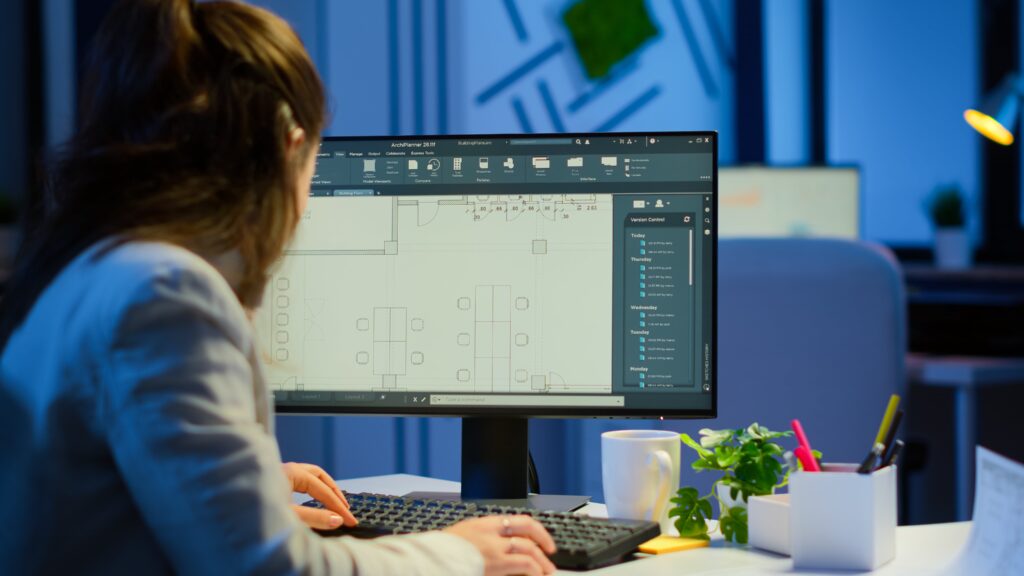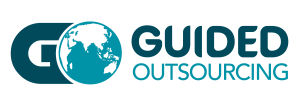
The Architecture, Engineering, and Construction (AEC) industry is highly dynamic and complex, constantly demanding innovation and precision. At the heart of many AEC operations is Computer-Aided Design (CAD), a key tool that drives accuracy, efficiency, and creativity. The rise of CAD has revolutionized the way industries approach engineering, architecture, product design, and manufacturing. As the demand for advanced CAD services grows globally, many AEC firms are evaluating how to optimize this function, whether through in-house teams or outsourcing.
One of the most attractive destinations for CAD outsourcing today is the Philippines. With a growing pool of skilled CAD professionals, competitive pricing, and a business-friendly environment, the country has established itself as a leader in providing outsourced CAD services.
The Struggles and Challenges of the CAD Industry
Before diving into the benefits of outsourcing CAD services, it’s important to understand some of the key challenges the industry faces:
1. Talent Shortage
The AEC industry requires a combination of technical expertise and creative problem-solving. However, many businesses are struggling to find qualified CAD professionals. The shortage of skilled workers, particularly those experienced with advanced 3D modeling, BIM (Building Information Modeling), and other evolving technologies, can slow down project timelines and increase labor costs.
2. High Labor Costs
Hiring and retaining in-house CAD designers can be expensive, especially in countries with a higher cost of living. Not only do businesses have to pay competitive salaries, but they also need to cover additional expenses such as benefits, training, office space, and equipment.
3. Evolving Technologies
The field of CAD design is continuously evolving with new software and technology. Businesses must ensure that their designers are proficient in the latest tools and techniques, which requires ongoing training and upskilling. For small and mid-sized firms, this can be costly and time-consuming.
4. Inconsistent Workload
The demand for CAD services in the AEC industry often fluctuates based on project cycles. During peak periods, companies may struggle with insufficient staff to meet deadlines, while during slower times, they may have an excess of CAD designers without enough work to justify their salaries. This inconsistency can create financial strain and inefficiency in operations.
5. Time Zone Challenges
For businesses located in different time zones, managing in-house teams across continents can pose logistical challenges. Coordination across time zones may lead to delays, miscommunication, or extended project timelines.
Given these challenges, many businesses in the AEC industry are exploring alternative solutions like outsourcing to improve efficiency and reduce costs.
Why Outsource CAD Services to the Philippines
Outsourcing CAD services is an increasingly popular strategy for businesses seeking to optimize operations while minimizing costs. Among the top destinations for CAD outsourcing is the Philippines, a country known for its skilled workforce, cost advantages, and favorable business climate.
Here are the key reasons why AEC firms should consider outsourcing their CAD design needs to the Philippines:
1. Highly Skilled Workforce
The Philippines boasts a large pool of highly educated and English-speaking CAD professionals. Many universities and technical institutions in the country offer specialized programs in engineering, architecture, and computer-aided design, ensuring that graduates have the skills necessary to excel in the AEC industry.
Philippine CAD designers are well-versed in popular software such as AutoCAD, Revit, SketchUp, SolidWorks, and BIM tools. Their training often includes exposure to both 2D and 3D CAD design, enabling them to work on a wide range of projects, from residential building plans to complex infrastructure designs.
Additionally, CAD designers in the Philippines are known for their adaptability and eagerness to learn. They are quick to adopt new technologies and can be easily trained to meet the specific needs of a business, making them valuable assets in an ever-evolving industry.
2. Cost-Effectiveness
One of the most compelling reasons to outsource CAD services to the Philippines is the significant cost savings. Compared to hiring in-house CAD designers in Western countries, outsourcing to the Philippines can reduce labor costs by up to 60-70%. This is largely due to the lower cost of living in the country, which allows businesses to access high-quality talent at a fraction of the cost.
In addition to lower salaries, businesses can save on overhead costs such as office space, equipment, and employee benefits. Outsourcing also eliminates the need for expensive recruitment and training programs, as the outsourcing provider typically handles these responsibilities.
3. Scalability and Flexibility
Outsourcing CAD services to the Philippines offers businesses greater flexibility and scalability. During peak periods, companies can quickly scale up their CAD teams to handle an increased workload. Conversely, during slower periods, they can scale down without the burden of maintaining a full-time staff.
This scalability allows businesses to better manage their resources and ensure that they are only paying for the services they need. It also provides flexibility in project management, as companies can outsource specific tasks or entire projects depending on their requirements.
4. Time Zone Advantage
The Philippines’ time zone offers a unique advantage for AEC firms located in North America, Europe, and other parts of the world. Due to the country’s strategic location, companies can benefit from round-the-clock productivity. For instance, work assigned at the end of the day in the U.S. or Europe can be completed overnight in the Philippines, enabling faster project turnaround times and improved efficiency.
5. Cultural Compatibility and Strong Work Ethic
Filipino workers are known for their strong work ethic, attention to detail, and commitment to quality. These traits align well with the needs of the AEC industry, where precision and accuracy are critical.
Moreover, the Philippines has a strong cultural affinity with Western countries, particularly the United States. This cultural compatibility makes it easier for CAD designers to understand and meet the expectations of clients from these regions. The widespread use of English as a second language further facilitates communication and reduces the risk of misunderstandings or misinterpretations in project specifications.
6. Government Support and Business-Friendly Environment
The Philippine government has been proactive in supporting the growth of the outsourcing industry, particularly in the field of engineering and CAD services. The country offers various incentives to foreign businesses, including tax breaks and investment promotions. Additionally, the country’s outsourcing industry is well-regulated, ensuring that businesses can operate smoothly and securely.
The Philippine IT-BPO (Information Technology and Business Process Outsourcing) sector, which includes CAD services, is one of the fastest-growing industries in the country. This growth has resulted in the development of a robust infrastructure, reliable internet connectivity, and advanced technology solutions to support outsourcing operations.
Outsourcing CAD Services vs Hiring In-House
While outsourcing CAD services to the Philippines offers numerous benefits, some businesses may still wonder how it compares to hiring in-house CAD designers. Here’s a detailed comparison to help AEC firms make an informed decision:
- Cost
As mentioned earlier, outsourcing to the Philippines is far more cost-effective than hiring in-house designers, especially in countries with high labor costs like the U.S., Canada, and Europe. By outsourcing, companies can save on salaries, benefits, office space, software licenses, and equipment.
In-house designers, while offering more control and immediate availability, come with higher overheads and fixed costs, which can be burdensome, especially for small and medium-sized firms.
- Control and Collaboration
Hiring in-house CAD designers provides businesses with greater control and the ability to directly manage their team. In-house employees are often more integrated into the company culture and can collaborate more easily with other departments.
However, modern communication tools and project management platforms have significantly improved collaboration with outsourced teams. Regular video calls, shared file systems, and real-time updates allow businesses to maintain effective communication and control over their outsourced CAD projects. Many outsourcing providers in the Philippines have dedicated project managers who act as a bridge between the client and the design team, ensuring that projects are completed according to specifications and timelines.
- Access to Specialized Skills
Outsourcing CAD services provides businesses with access to a larger talent pool, including professionals with specialized skills that may be difficult or costly to find locally. This is particularly beneficial for firms that need expertise in niche areas such as BIM, 3D modeling, or sustainable architecture.
In contrast, in-house teams may have a more limited range of skills, requiring businesses to invest in additional training or hire multiple specialists to meet project requirements.
- Scalability
Outsourcing offers unmatched scalability, allowing businesses to adjust their CAD resources based on current project demands. This flexibility ensures that companies can meet tight deadlines without the burden of maintaining excess staff during off-peak times.
On the other hand, scaling an in-house team can be time-consuming and costly, involving recruitment, onboarding, and training processes. In-house teams may also struggle to handle sudden increases in workload, leading to potential delays or compromises in quality.
- Quality Control
While businesses may be concerned about quality when outsourcing, reputable outsourcing providers in the Philippines are known for delivering high-quality work. These providers often have stringent quality control processes in place, including regular reviews, revisions, and client feedback loops to ensure that projects meet the required standards.
In-house teams offer more immediate oversight and control, but maintaining consistent quality can still be a challenge, especially if the team is overworked or under-resourced.
Conclusion
Outsourcing CAD services to the Philippines is a strategic move for businesses in the AEC industry looking to enhance efficiency, reduce costs, and access specialized talent. With a highly skilled workforce, cost-effective solutions, and a favorable business environment, the Philippines has become a global hub for CAD outsourcing. The flexibility and scalability that outsourcing offers make it an ideal solution for companies facing fluctuating workloads and high labor costs.
While hiring in-house CAD designers may provide more control and immediate collaboration, outsourcing offers numerous advantages, particularly for small and mid-sized firms that need to optimize their resources. By partnering with a trusted CAD outsourcing provider in the Philippines, AEC businesses can streamline their operations, improve project turnaround times, and focus on core business activities while leaving the technical design work to the experts.
As the AEC industry continues to evolve, outsourcing CAD services to the Philippines will remain a valuable and viable solution for companies seeking to stay competitive in a fast-paced, technology-driven market.
If you’re looking for an outsourcing partner to help with your CAD work, consider partnering with Guided Outsourcing. Schedule a free consultation here!

